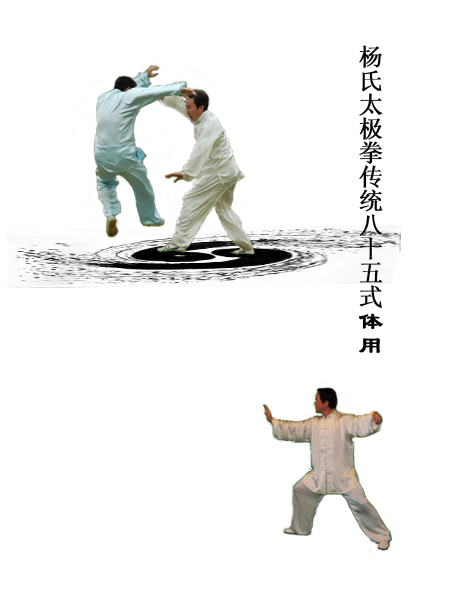
当前课程知识点:Production Engineering > Chapter 5 Gas Lift > 5.1 Principles of Gas Lift > 5.1.2 Initial Kick-off of Gas Lift
返回《Production Engineering》慕课在线视频课程列表
返回《Production Engineering》慕课在线视频列表
同学们好
本节我们介绍气举的启动过程
气举的启动
是怎么产生的呢
对于这样的一口油井
在井筒中油管和环空之间
没有任何的附加设备
这样的油井进行气举的时候
它的启动过程是怎样的呢
首先在停产的时候
地层内的流体在地层静压的作用下
进入到环空和油管当中
使得油管内和环空内的液面
为同样的高度
这个时候我们从环空注入气体
注入的气体带有一定的压力
使得环空的液面下降
那么环空内的液体去哪了呢
因为在油管的最下端也就是管鞋处
环空和油管是连通的
因此下降环空内的液面
环空的液体就通过管鞋处进入到了油管内
使得油管的液面上升
根据连通器的原理
如果我们使环空内的液面持续下降
如何才能实现呢
只有通过持续不断的提高注入的压力
当这个压力逐渐提高
就使得液面持续下降
直到达到这样的一种状态
什么状态呢 液面到达了管鞋的位置
这个时候注入气体的压力达到了最高值
这样的一个压力支持了油管内
从管鞋到井口的
最高的一个液柱高度
随着气体持续不断地注入到环空当中
气体就从管鞋口被注入到了油管内部
与油管内的原油混合一起向上流动
不断的流出井口
这样的一个过程中
因为原油和注入气体的混合
使得井筒内流动的压力损失降低了
管鞋位置的压力就随之降低了
带来的后果有两个方面
一个就是注入气体
压力随之降低
压力随之降低
第二 井底的流压也随之降低
那么井底的流压降低
就意味着生产压差加大
地层流体涌入到井筒内
使得整个的气举(启动)过程完成
按照我们前面的介绍
整个气举的启动过程
就是不断的注入越来越高压力的气体
使得液面持续下降到管鞋位置
注入压力达到峰值
当达到管鞋位置之后
气体就会被注入到油管中
注入到油管中之后
注入的压力随之下降
是这样的一个过程
那么在这个过程中
如果我们记录下注入的压力
随时间的一个变化曲线的话
大家考虑一下这样的一个曲线
会是什么样的一种形式呢
我们来看这条曲线横轴时间
纵轴注入的压力
正像我们刚才分析的一样
注入的压力在液面持续下降的过程中
注入压力是逐渐升高的
当升高到最高点的时候
就意味着液面
已经被压到了管鞋的位置
已经被压到了管鞋的位置
压力随之下降的过程
其实就是气体被注入到油管当中
压力下降的过程
最后有一个平稳生产的过程
达到一个平稳输出的压力
在这个曲线上我们需要注意的一点
就是在压力平稳之前有一个上升的过程
有一个小幅上升的过程
为什么会出现这种情况呢
原因就是
当气体被挤入到油管内的时候
油管中的压力梯度降低了
会有新鲜的地层流体
也就是原油进入到了油管中
这样就势必增加了混合流体的密度
使得我们注入的压力
要适当增高
才能支持
这种新的油气的混合流体的压力
因此这个位置会有一个小幅的升高
然后平稳的这样一个过程
那么在这样的曲线里面
有两个压力点我们需要知道
首先一个就是这个峰值压力
我们一般称这个峰值压力为
启动压力
而整个的气举平稳之后
这个压力我们称为工作压力
其中启动压力的概念是非常重要的
也就是当环空内的液面
到达管鞋处的位置
也就是到达注气点的位置
这个时候井口的注入压力达到最高值
我们就称为启动压力
实现刚才的气举的启动过程
我们需要这样的
气举的生产系统
其中提供注入压力
是靠了压缩机来实现的
那么我们要考虑的一个问题是
选择压缩机的最大输出压力的时候
我们需要考虑的是哪个压力点呢
显然是要考虑启动压力这个峰值压力点
而压缩机在正常工作的时候
它输出的压力又是哪个点呢
应该是工作压力
那么就意味着
我们选择压缩机的最大能力
依赖于峰值压力
而压缩机正常工作的时候
又工作在这个压力点
那么我们这两个压力的差值越大
那么就意味着压缩机选择
它的功率利用率就越低
那么如何提高压缩机的利用率呢
显然就需要将工作压力
和峰值压力更接近一些
如何降低启动压力
来提高压缩机的功率利用率
是我们在气举设计的时候
首先要考虑的问题
通过我们刚才的讲解
我们知道峰值压力的出现
是因为气体只有注入到管鞋位置的时候
才能够使得气举的气体
被注入到油管之内
导致了启动压力峰值
比工作压力要高很多
那么我们能不能想办法
不让它到最低的管鞋位置
才把气体注入进去
而在整个的液面降低的过程当中
在油管的某个位置上就把气体注入进去呢
这是值得我们思考的一个问题
以上就是我们介绍的本节的主要内容
同学们 再见
-1.1 Main Tasks of Production Engineering
--1.1 Main Tasks of Production Engineering
-1.2 Flow in Production System
--1.2 Flow in Production System
-Problems
--Chapter 1 - Problems
-2.1 IPR Curve and Well Productivity
--2.1.1 Single-Phase Oil Inflow Performance Relationships
-2.2 Vogel's IPR and Applications
--2.2.2 Determination of IPR Curves Using Vogel's Equation
--2.2.3 Skin Factor and Flow Efficiency
--2.2.4 Extension of Vogel's Equation for Non-Complete Wells
--2.2.5 Combination Single-Phase Liquid and Two-Phase Flow
-Problems
--Chapter 2--Problems
-3.1 Two-Phase Flow in Wellbore
--3.1.1 Flow Regimes in Vertical Flow
-3.2 Two-Phase Vertical Flow Pressure Gradient Models
--3.2.1 Two-Phase Pressure Gradient Equations
--3.2.2 Predicting Gas-Liquid Flow Regimes Using the Okiszewski Correlation
--3.2.3 Pressure Gradient Calculation Using the Okiszewski Correlation
-3.3 Vertical Lift Performance
--3.3 Vertical Lift Performance
-Problems
--Chapter 3--Problems
-4.1 Nodal Analysis Approach
--4.1.2 Solution Node at Bottom of Well
--4.1.3 Solution Node at Wellhead
-4.2 Flow through Chokes
--4.2.2 Solution Node at Choke
-Problems
--Chapter 4--Problems
-5.1 Principles of Gas Lift
--5.1.2 Initial Kick-off of Gas Lift
-5.2 Gas Lift Valves and Gas Lift Completions
-5.3 Gas Lift Design
--5.3.1 Gas Lift Design for Specific Production Rate
--5.3.2 Gas Lift Design for Specific Injection Rate
--5.3.3 Kick-off Procedure with Unloading Valves
--5.3.4 Design Depths of Unloading Valves
-Problems
--Chapter 5--Problems
-6.1 Introduction of Surface and Downhole Equipment
-6.2 Operating Principle of Sucker Rod Pumps
-6.3 Pumping Unit Kinematics
--6.3.1 Motion of Polished Rod-Simple Harmonic Motion
--6.3.2 Motion of Polished Rod-Crank and Pitman Motion
-6.4 Polished Rod Load
--6.4.3 Peak Polished Rod Load and Minimum Polished Rod Load
-Problems
--Problems for chapter 6: Sucker Rod pumping I
-6.5 Calculation of Counterbalancing, Torque and Power
--6.5.1 Balance of Pumping Unit
--6.5.2 Counterbalancing Calculation
--6.5.3 Torque and Torque Factor
-6.6 Volumetric Efficiency of Pump
--6.6.2 Gas Effect on Pump Performance
--6.6.3 Measures of Enhancing Pump Volumetric Efficiency
-6.7 Design of Pumping System
--6.7.1 Strength Calculation and Design of Sucker Rod Strings
--6.7.2 Design Procedures of Pumping System
-6.8 Analysis of Sucker Rod Pumping Well Conditions
--6.8.1 Acoustic Surveys and Analysis of Annular Liquid Levels
--6.8.2 Introduction of Dynamometer Card
--6.8.3 Typical Dynamometer Cards
-Problems
--Problems: Chapter 6: Sucker Rod Pumping (II)
-7.1 Water Injection System
--7.1.1 Water Resources and Water Treatment
--7.1.2 Introduction of Water Injection System
-7.2 Injectivity Analysis
--7.2.1 Injectivity and Injectivity Index Curves
-7.3 Injection Tubing String
--7.3 Introduction of Injection Tubing Strings
-7.4 Analysis and Application of Injectivity Index Curves
--7.4.1 Analysis of Injectivity Index Curves
--7.4.2 Injection Choke Deployment
-Problems
--Chapter 7--Problems
-8.0 Introduction
-8.1 The Fracturing of Reservoir Rock
--8.1.1 Basic Rock Mechanics Parameters
--8.1.4 Fracture Initiation Conditions
-Problems
--Chapter 8(I)--Problems
-8.2 Fracturing Fluids
--8.2.2 Fluid-Loss Properties of Fracturing Fluids
--8.2.3 Rheological Properties of Fracturing Fluids
-8.3 Proppants
-8.4 Hydraulic Fracturing Design
--8.4.1 Productivity Index of Hydraulic Fracturing Wells
--8.4.2 Fracture Geometry Models
--8.4.3 Design Procedure for Hydraulic Fracturing
-Problems
--Chapter 8(II)--Problems
-9.0 Introduction
-9.1 Carbonate Acidizing
--9.1.1 Mechanism of Carbonate Acidizing
--9.1.2 Effect Factors of Reaction Rate
--9.1.4 Effective Distance of Live Acid
-9.2 Sandstone Acidizing
--9.2.1 Mechanism of Sandstone Acidizing
--9.2.2 Mud Acid Treatment Design
-9.3 Acidizing Treatment Technologies
--9.3.2 Acidizing Treatment Operations
-Problems
--Chapter 9--Problems
-Final Exam
